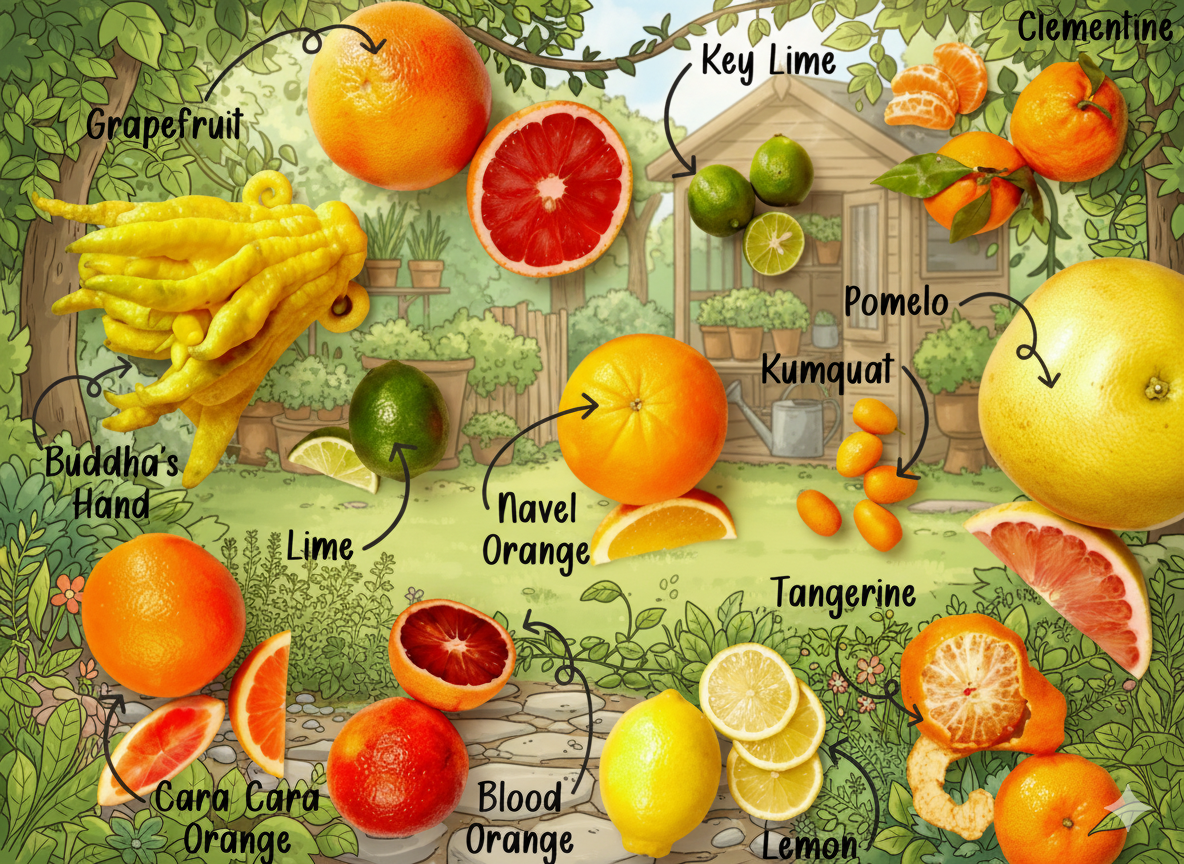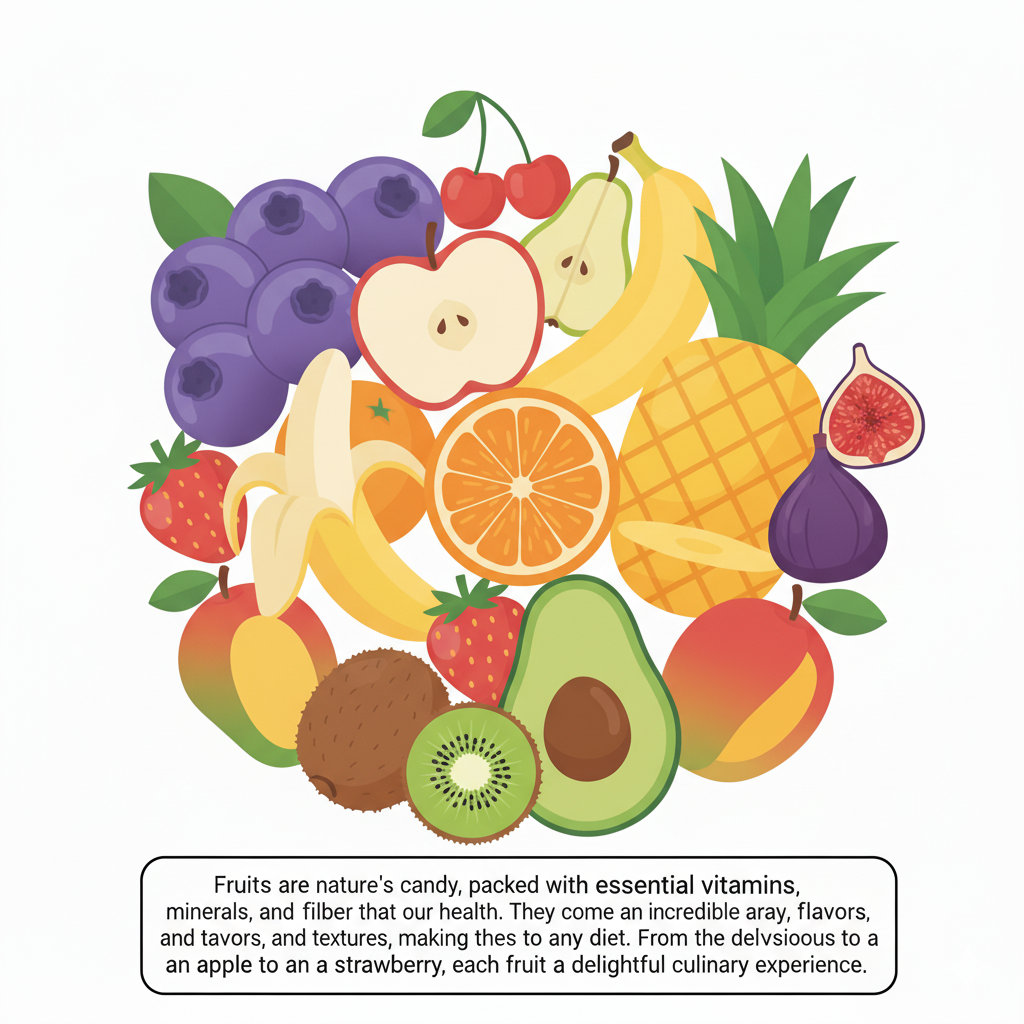Exploring the Wonderful World of Citrus Fruits: A Comprehensive Visual Guide
Citrus fruits are more than just vibrant additions to our plates; they are a treasure trove of flavors, colors, and health benefits. From the tangy zest of a lemon to the sweet juiciness of an orange, citrus fruits have captured the hearts of many across the globe. In this comprehensive visual guide, we will explore the diverse varieties of citrus fruits, their unique characteristics, culinary uses, and health benefits. Join us on this juicy journey through the wonderful world of citrus!
Understanding Citrus Fruits
Citrus fruits belong to the Rutaceae family and are characterized by their juicy segments, thick rinds, and vibrant colors. They thrive in warm, subtropical and tropical climates, making them popular in regions like Florida, California, and Mediterranean countries. The most well-known citrus fruits include oranges, lemons, limes, and grapefruits, but there are many other lesser-known varieties worth exploring.
The Nutritional Powerhouse
Citrus fruits are renowned for their high vitamin C content, which is vital for boosting the immune system, aiding in collagen production, and improving overall skin health. They also contain various antioxidants, flavonoids, and fiber, making them an excellent choice for a healthy diet. Incorporating citrus into your meals can help lower the risk of chronic diseases, improve digestion, and support heart health.
Diverse Varieties of Citrus Fruits
Let’s dive deeper into some popular citrus fruits and their unique characteristics.
1. Oranges
Oranges are perhaps the most popular citrus fruit, known for their sweet flavor and refreshing juice. Varieties such as the Navel and Valencia are commonly enjoyed. Navel oranges are seedless and perfect for snacking, while Valencia oranges are prized for juicing due to their high juice content.
2. Lemons
Lemons are synonymous with tartness and are a fundamental ingredient in cooking and baking. They are often used to enhance the flavor of dishes or as a natural preservative. The zest of a lemon can elevate the flavor profile of both sweet and savory dishes.
3. Limes
Limes are smaller than lemons and pack a punch of flavor. They are often used in beverages, marinades, and desserts. The Persian lime is the most commonly used variety in cooking, while the Key lime is known for its distinctive flavor in desserts like Key lime pie.
4. Grapefruits
Grapefruits are known for their slightly bitter and tangy flavor, making them a popular breakfast fruit. They come in several varieties, including pink, white, and ruby red, each offering different levels of sweetness and acidity. Grapefruits are also low in calories and rich in vitamins A and C.
5. Tangerines
Tangerines are smaller citrus fruits that are easy to peel and segment. They are sweet and juicy, making them a favorite for snacks, salads, and desserts. The Clementine is a popular variety, often marketed as seedless and easy to eat.
6. Pomelos
The pomelo is the largest citrus fruit and is often mistaken for a grapefruit due to its similar appearance. However, pomelos are sweeter and less bitter, offering a unique flavor profile. They are commonly used in salads and desserts in Asian cuisine.
7. Mandarins
Mandarins are a group of citrus fruits that include tangerines and clementines. They are known for their sweet flavor and easy-to-peel skin, making them an excellent choice for kids and on-the-go snacks. The Satsuma variety is especially popular for its juiciness and sweetness.
Culinary Uses of Citrus Fruits
Citrus fruits are incredibly versatile in the kitchen. Here are some ways to incorporate them into your meals:
1. Fresh Juices and Beverages
Freshly squeezed citrus juices are a refreshing way to start the day. Whether it’s orange juice for breakfast or a lime-infused cocktail for an evening gathering, citrus juices add a burst of flavor. Consider trying a tropical fruit medley for a refreshing beverage option!
2. Marinades and Dressings
Citrus juices can act as a natural tenderizer for meats and seafood. A marinade made with lime or lemon juice, olive oil, and herbs can infuse dishes with flavor. Additionally, citrus dressings can elevate salads and grain bowls.
3. Baking and Desserts
Citrus fruits can add brightness to baked goods. Lemon zest can enhance the flavor of cakes, while orange juice can be used in glazes and syrups. Citrus fruits are also fantastic in fruit salads, sorbets, and puddings.
4. Garnishes and Flavor Enhancers
The zest of citrus fruits can be used as an aromatic garnish for cocktails or desserts. A simple sprinkle of lime or lemon zest can transform a dish, adding both visual appeal and flavor. Don’t forget to check out capturing the beauty of fresh fruit for inspiration!
Health Benefits of Citrus Fruits
Beyond their delightful flavors, citrus fruits offer numerous health benefits:
1. Immune Support
The high vitamin C content found in citrus fruits aids in boosting the immune system, helping to ward off colds and other infections.
2. Skin Health
Vitamin C is crucial for collagen production, which is essential for skin elasticity. Regular consumption of citrus can promote healthy, glowing skin.
3. Digestive Health
Citrus fruits are rich in fiber, which aids in digestion and can help prevent constipation. The natural acidity can also help balance stomach pH.
4. Heart Health
Research suggests that the flavonoids and antioxidants found in citrus can help lower cholesterol levels and reduce the risk of heart disease.
5. Weight Management
Low in calories and high in nutrients, citrus fruits are an excellent choice for those looking to manage their weight. Their fiber content helps you feel full longer.
Growing Citrus Fruits
For those interested in gardening, growing citrus fruits can be a rewarding experience. Here are some tips for cultivating your own citrus trees:
1. Choosing the Right Variety
Consider your climate when selecting citrus varieties. Some types thrive in cooler temperatures, while others prefer warmer, more humid conditions.
2. Soil and Sunlight
Citrus trees require well-draining soil and plenty of sunlight to thrive. Ensure they receive at least 6-8 hours of sunlight daily.
3. Watering and Fertilizing
Regular watering is essential, particularly during dry seasons. Use a balanced fertilizer to provide necessary nutrients, especially during the growing season.
4. Pest and Disease Management
Keep an eye out for common pests like aphids and scale insects. Treat any infestations promptly with organic pest control methods.
Conclusion
The wonderful world of citrus fruits is a vibrant tapestry of flavors, colors, and nutritional benefits. From their diverse varieties to their culinary versatility, citrus fruits are a staple in many kitchens around the world. Whether you’re enjoying a zesty lemon in a recipe or sipping on fresh orange juice, these fruits can elevate your meals and enhance your health.
With their bright hues and refreshing tastes, citrus fruits also inspire creativity in art and design. Explore the artistic side of fruits in our article Feast Your Eyes: A Celebration of Fruit in Art Nouveau Style. So, why not embrace the citrus craze, savor their flavors, and reap the health benefits they offer? Happy exploring!



